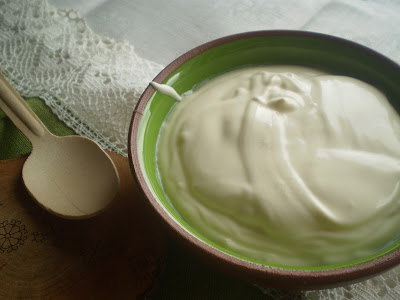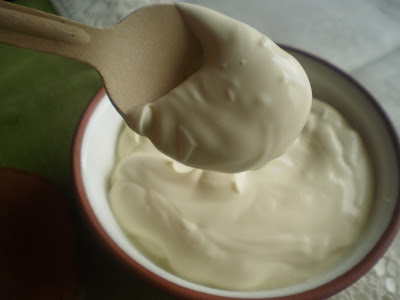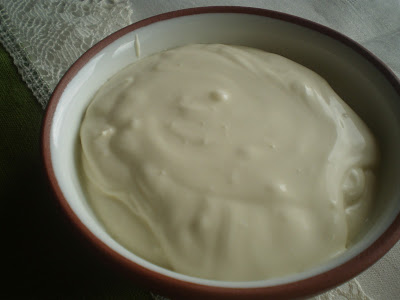Sour cream (in Latvian skābais krējums) is a key ingredient of almost any traditional dressing or sauce. Sour cream is spoon over baked potatoes, mixed into curd cheese (in Latvian - biezpiens) is added to enrich stews and soups. It's also used in deserts. Moreover, sour cream is churned into artisanal butter. I cann't imagine Latvian cooking without a sour cream, and luckily it's very easy to make at home.
We are used to milk in its pure form - raw milk (in Latvian svaigpiens) which has not been pasteurised nor homogenised. This is what I call proper milk because milk treatment changes its flavour a lot. Besides, pasterisation kills also lactobacillus and therefore pasterised milk doesn't ferment naturally but gets spoiled. Similarly, homogenisation brakes the fat into smaler sizes and the fat in milk doesn't anymore separates from the watery emulsion. Pasteurised and homogenised milk may be used in cooking but isn't suitable for fermentation, butter churning or cheesemaking without a further treatment.
In the raw milk separation of the cream (fat) occurs naturally. Literally if milk is let to sit in the bottle (container) you can skim off the cream by spoon from the top. That's the way the raw cream is obtained. It is still slightly sweetish even it already contains some lactobacillus. Nowadays, there is no need to skim milk by hand as unpasteurised (raw) cream is sold in different grades of the total butterfat content (single cream, wipping cream, double cream). The most common sour creams are 20 to 30% fat. Accordingly, you need raw cream with the same fat content (between 20 and 30%), if you need to adjust it, go for higher fat content but never lower. Usually I recommend raw whipping cream (35% fat) to made sour cream.
Latvian sour cream doesn't have any particular strain of lactobacillus, but gets its acid making inhabitants from pores or surface of the container the cream is kept and the atmosphere (in old times it was a cellar where a fresh cream was kept in the wooden vessel). Raw cream left at room temperature starts to sour naturally.
Homemade sour cream is thick, viscous and slightly yellowish. When buying sour cream, be sure to check the fat content. Low fat sour creams (0-15%) are not real sour creams and most likely contain thickeners or other food additives. Store bought sour creams are made from pasteurised milk cultured with mesophilic bacteria - Lactococcus lactis, Lactococcus cremoris, Lactococcus diacetylactis.
500 ml raw whipping cream (or other raw cream with a fat content between 20% and 40 %)
Pour whipping cream into a wooden or other container of porous material, or a glass jar. Cover it with a cheesecloth and secure with a rubber band (don't place a tight lid). Keep the jar at room temperature for 1 to 2 days. When fermentation starts, transfer the jar to a fridge (or cellar) as slow fermentation and cold ripening produces more delicate flavour. Cream will set within 2 days. Place a tight lid and keep in fridge for up to 2 weeks.
In UK raw cream is sold at Hook & Son stall in Borough Market. Commercially produced sour cream is available at Lituanica, the largest Lithuanian supermarket chain specialising in Baltic food.



Nav komentāru:
Ierakstīt komentāru